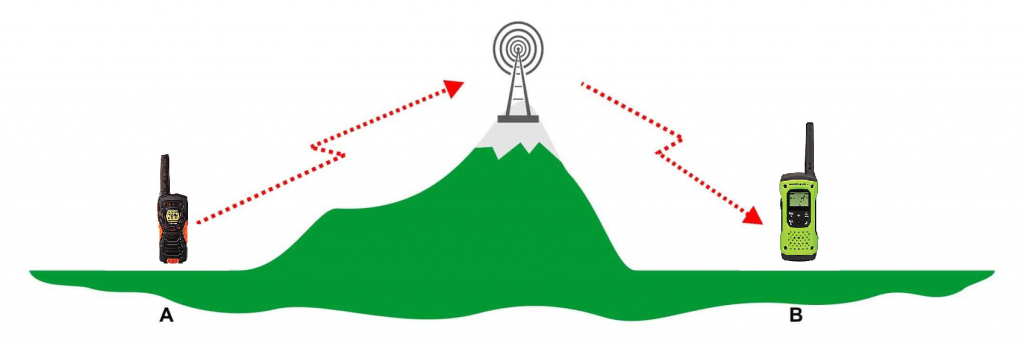We’ve discussed briefly that topography and tall buildings can greatly affect the usable range of a radio. UHF radio is generally considered line of sight, although this is a bit of a misnomer, since radio waves will frequently travel beyond what is directly visible due to scattering, refraction, and other forms of interaction with the natural environments.
Taking a look at the landscape around you, a few landmarks probably stand out as visible in a large portion of the location you may be in; these are commonly tall buildings, water and/or radio towers, mountain peaks (even distant ones). These are all features that greatly protrude above the horizon, and for this reason, are often where you will find radio installations, be it for broadcast TV & radio or for two-way communications, including cellular services. As far as two-way radio goes, repeaters often find a home in these sites.
Located in a high-visibility location, repeaters provide enhanced line-of-sight coverage for stations that wish to boost their range. Repeaters work by listening on one frequency, and when receiving a signal, immediately re-transmit the received signal from the high ground; repeaters are unique in that they are able to receive and transmit at the same time.

Repeater providing coverage to two stations that would otherwise be out of range
The reason for transmitting and receiving on different frequencies is due to a number of reasons; primarily since two stations transmitting on the same frequency would cause interference, and if the repeater were to listen to its own transmit frequency, it would not be able to hear anything other than itself (and get stuck in a feedback loop along the way!); for this reason, the two frequencies are separated.
The GMRS service includes the following repeater channels. The input frequency is the frequency on which the repeater listens and a user’s radio will transmit to use the repeater, and the output frequency is the frequency on which the repeater transmits and the user’s radio listens. The change in frequency happens automatically when the user presses the “Push-to-Talk” button on their radio.

Note that the output frequencies on channels 15R to 22R match that of the GMRS high power simplex frequencies (15-22); these channels are shared by simplex and repeater users.
Configuring your radio to use repeaters depends on the make and model, its a little different for each one, and not every type of GMRS radio will be capable of doing this. You will need to consult your radio’s manual or alter it’s programing to utilize the Texas GMRS Network. Note that most repeaters require setting a CTCSS tone to activate them; this is discussed in the next section.
